Table of contents
What are king oyster mushrooms? The king oyster mushroom ( Pleurotus eryngii), also known as the king oyster mushroom ( organic ?), is a tasty edible mushroom from the oyster mushroom family. You can eat king oyster mushrooms raw, but only in moderation.
Using the king oyster mushroom in the kitchen:
King oyster mushrooms have brown or light brown caps. Their white stems and brown caps have a pleasant nutty and savory taste. The flesh of the king oyster mushroom remains firm even after cooking. Are king oyster mushrooms tough? Young fruit bodies have a juicy consistency, older specimens can be tougher. Both the aroma and consistency are reminiscent of the porcini mushroom (keyword: porcini-like consistency), which is why the brown king oyster mushroom is considered a good, inexpensive alternative that is available all year round.
There are many different and very simple ways to prepare oyster mushrooms in a vegan way. They can be fried, baked, steamed, grilled and braised. Thanks to their delicate but characteristic aroma, the king oyster mushroom goes perfectly in soups, sauces or as a side dish to all kinds of vegetarian and vegan dishes. They also make a great main dish in a mushroom pan, vegetable pan, risotto, on a pizza or in crêpes. You can simply season the oyster mushroom with a little salt andpepper or marinate it with garlic and herbs such as parsley, marjoram, oregano, thyme, rosemary, etc.
King oyster mushrooms are often used as a meat substitute in Asia. They are also known as "vegan scallops" because they imitate the texture and taste of seafood when prepared in vegetable margarine and wine. In Japan, king oyster mushrooms are prepared with teriyaki sauce, mirin or soy sauce.
Can you eat oyster mushrooms raw? The oyster mushroom can be eaten raw (raw food), e.g. in salads or thinly sliced with a little oil and vinegar as carpaccio. However, due to the fact that it is difficult to digest when raw, it is recommended that you consume raw oyster mushrooms in moderation.
Vegan recipe for quinoa with oyster mushrooms:
Ingredients (for 6 people): 500 g oyster mushrooms (raw, organic), 250 g quinoa, 1 clove of garlic, 3 shallots, 1 bunch of chervil, 650 ml vegetable broth, 100 ml vegan vegetable stock, a total of 5 tablespoons rapeseed oil, 2 tablespoons lemon juice, a little salt and pepper.
Preparation: Brush the raw oyster mushrooms or rub them with a cloth (do not wash them, otherwise the mushrooms will taste watery due to the absorption of water); then cut into small pieces. Peel the garlic clove and chop finely. Heat three tablespoons of oil in a large pan and gently fry the oyster mushrooms with the garlic, put them in a bowl and set aside.
Peel the shallots and dice finely. Wash the bunch of chervil, dry it and chop it finely. Rinse the quinoa in a sieve under hot water. Bring the vegetable stock to the boil. Heat 2 tablespoons of oil in a large pot, add the shallots and quinoa and fry for about 2 minutes. Pour in the vegetable stock and let it reduce for about 1 minute. Now add the hot vegetable stock and simmer covered on a low heat for about 12 minutes. Stir in the oyster mushrooms and chervil and season with lemon juice, salt and pepper. Cover the vegan quinoa and oyster mushroom pan and let it simmer for about 5-10 minutes and then serve.
Vegan oyster mushroom recipes can be found under the note: " Recipes that have the most of this ingredient ".
| Not only vegans or vegetarians should read this: Vegans often eat unhealthily. Avoidable nutritional errors. |
Shopping - where to buy oyster mushrooms?
Supermarkets such as Coop, Migros, Denner, Volg, Spar, Aldi, Lidl, Rewe, Edeka, Hofer etc. often offer fresh oyster mushrooms (raw). You can also find king oyster mushrooms in organic supermarkets (e.g. Alnatura and Denn's Biomarkt), organic shops, delicatessens and weekly markets - often in organic quality. As a cultivated mushroom, king oyster mushrooms are available fresh all year round. You can also buy dried oyster mushrooms, e.g. in online shops.
Found in the wild - Season:
The brown king oyster mushrooms grow wild south of the Alps in the Mediterranean region and grow there in the forest, mostly on the roots of umbelliferous plants (from March to November). North of the Alps, king oyster mushrooms are only found cultivated and there they are in season all year round.
Storing oyster mushrooms:
Fresh oyster mushrooms can be wrapped in a damp cloth for storage in the refrigerator and kept raw for up to a week. King oyster mushrooms can also be frozen for up to 8 months. To do this, you should clean the raw oyster mushrooms and place them whole or in slices in freezer-safe containers.
Oyster mushroom ingredients - nutritional values - calories:
The energy content of oyster mushrooms is 33 kcal per 100 g, of which carbohydrates make up 6.1 g/100g. Other ingredients: Fat is barely present at 0.41 g/100g. Do king oyster mushrooms contain protein? King oyster mushrooms contain 3.3 g of protein per 100 g. 1
Do oyster mushrooms contain vitamins? Oyster mushrooms contain 5 mg of niacin (ex vitamin B3) per 100 g, which is 31% of the daily requirement, similar to raw oyster mushrooms. In dried form, porcini mushrooms, for example, contain more than ten times as much niacin (53 mg/100g). 1 However, these are usually soaked before further use, so the concentration decreases again. A little more niacin can be found in brewer's yeast (57 mg/100g).
100 g of king oyster mushrooms also contain 0.35 mg ofriboflavin (vitamin B2) - that makes up 25% of the daily requirement. Raw oyster mushrooms (0.35 mg/100g) and raw porcini mushrooms (0.37 mg/100g) contain a similar amount of riboflavin. You can find particularly high levels of this vitamin in dried parsley, for example. 1
The pantothenic acid (vitamin B5) content in oyster mushrooms is 1.3 mg/100g. This covers 22% of the daily requirement. Raw oyster mushrooms (1.3 mg/100g) and giant button mushrooms (1.5 mg/100g) have similar pantothenic acid contents. Spirulina (3.5 mg/100g) and above all various yeast products (yeast flakes, etc.) are considered foods with a high vitamin B5 content. 1
The entire oyster mushroom ingredients (oyster mushroom nutrients), the coverage of the daily requirement and comparison values with other ingredients can be found in our nutrient tables. In the article Nutrients explained you will get a detailed insight into the topic.
Health aspects - effects:
Are oyster mushrooms healthy? / Are oyster mushrooms healthy? The low-calorie and practically fat-free oyster mushroom is well suited for figure- and health-conscious people. The medicinal mushroom contains useful bioactive compounds that are health-promoting (cures diseases) and health-preserving (activates the immune system). 2
How healthy are king oyster mushrooms? King oyster mushrooms contain polysaccharides that have a variety of biological activities, including antioxidant, immunoregulatory and bacteriostatic effects. 3 Studies have also shown that these polysaccharides significantly inhibit the growth of tumor cells, which is why king oyster mushrooms are used in cancer prevention. 2,3
Since the total lipid and cholesterol excretion in the feces increased in experiments, the oyster mushroom could be used as a natural cholesterol-lowering agent in the human diet. 4
Dangers - Intolerances - Side effects:
There are few to no known side effects when eating cooked king oyster mushrooms (not raw). Should you eat king oyster mushrooms raw? Some people find they sit heavily in their stomachs after eating them raw: The king oyster mushroom is difficult to digest raw, so it can only be eaten raw in small quantities.
Folk medicine - naturopathy:
In traditional Chinese medicine ( TCM), the powdered fruit bodies of oyster mushrooms are used for immune stimulation, skin care, wound healing, and cancer and lumbago treatment. 5
Oyster mushrooms: occurrence - origin - ecology
The oyster mushroom is native to the Mediterranean regions of Europe as well as the Middle East and some areas of North Africa. As its name 'oyster mushroom' suggests, in nature it grows on the roots of herbs (parasitic) and not only on dead wood like other oyster mushrooms (saprobiontic).
King oyster mushrooms were originally cultivated in Italy. Their popularity quickly spread worldwide, and with it their cultivation. The king oyster mushroom is now a valued edible mushroom in Asia, Europe, North Africa and the USA. 2
Growing in the garden (brown oyster mushroom):
Can you grow oyster mushrooms yourself? For growing at home, it is best to buy ready-made mushroom cultures from specialist retailers, as growing them on substrates is difficult. The mushroom cultures grow on chipped wood and are wrapped in plastic film. You only need to keep the oyster mushroom culture moist. A suitable location for the culture has a temperature between 10-20 °C and high humidity. A lot of light, however, is not necessary. After a short time, the first mushrooms should be visible. 6
Cultivation - Harvest:
In Europe, the king oyster mushroom is mainly cultivated on substrate blocks. In Asian countries, however, bottle cultivation is the dominant method. Sawdust from various hardwoods is usually used as a sterilized substrate, which is supplemented with wheat bran, rice bran, corn meal, etc. Temperatures between 14 and 16 °C and a high humidity of around 90% enable and promote the formation of fruit bodies. The king oyster mushrooms are harvested with the substrate residue on the stem, which increases the storage time. 7
In Asia, oyster mushrooms are grown on a large scale. Japan and South Korea are among the largest producers worldwide. Bottle cultivation, which is largely carried out by machine, is more productive and significantly more efficient than cultivation on substrate blocks. 7
Ecological aspects:
Cultivated oyster mushrooms should not contain any heavy metals that are harmful to health. However, some conventional growers use fungicides and insecticides. This way they keep the substrate for the oyster mushrooms germ-free. No such substances are used in organic cultivation, which is why organically grown oyster mushrooms should be used.
When growing in bottles, there is only one harvest, but production is more efficient. After that, the used bottles must be replaced with new ones. When growing on substrate blocks, there are two harvests per block before they have to be disposed of. 7 This could have an impact on the amount of waste during production.
It is worth mentioning that oyster mushrooms can be cultivated on organic and agricultural waste, thus utilizing by-products and waste products from other production chains.
Danger of confusion with the King Oyster Mushroom:
The mushroom called King Oyster Mushroom can be confused with the following, also edible mushrooms: Barked Oyster Mushroom ( Pleurotus dryinus), Grooved Oyster Mushroom ( Pleurotus cornucopiae) and Oyster mushrooms ( Pleurotus pulmonarius). Details on the Pale Oyster Mushroom can be found in the chapter below.
However, it should not be confused with the ear-shaped oyster mushroom ( Pleurocybella porrigens), as the latter is deadly poisonous. 8
General information:
The botanical name Pleurotus refers to the ear-shaped stature and the lateral stem of the mushroom (Greek pleura = side, Greek us or ous = ear). 9 The king oyster mushroom was given the name 'king oyster mushroom' due to its close relationship to oyster mushrooms.
Strictly speaking, oyster mushrooms come in brown or pale. The pale oyster mushroom ( Pleurotus nebrodensis or P. eryngii var. nebrodensis) has a creamy white or ivory colour. It is considered a highly endangered species of mushroom 12 and only grows wild in Sicily 11 and Greece 13. Mushroom cultures can occasionally be found on the internet, and China and Poland cultivate the pale oyster mushroom for commercial purposes. 11 It is much rarer to find it in stores, so confusion at the shop counter is rather unlikely.
Brown oyster mushroom: The brown oyster mushroom ( Pleurotus eryngii or P. eryngii var. eryngii) is known almost everywhere simply as "oyster mushroom" and in most cases is also sold labeled as such.
Alternative names:
Synonyms for the king oyster mushroom (Kraeuterseitling, herb oyster mushroom) are: king oyster mushroom, brown king oyster mushroom (brown herb oyster mushroom, brown herb oyster mushroom), sea oyster mushroom (sea oyster mushroom), laser herb oyster mushroom and hogweed oyster mushroom (hogweed oyster mushroom). As mentioned, the pale king oyster mushroom (pale herb oyster mushroom) is either a separate variety or a separate species, 13 as is the fennel oyster mushroom (fennel oyster mushroom, Pleurotus ferulae).
The following misspellings are more or less common: Saitling, Char, Kräuterseitling, Krauterseitling, Kräuterseitling culture or Kräuterseitlinge ingredients (Kräuterseitlinge nutrients).
In English, the king trumpet mushroom is known as king oyster mushroom, french horn mushroom, trumpet royale, king brown mushroom and boletus of the steppes. In Italy, the king oyster mushroom is called cardoncello (plural cardoncelli).
Keywords for use:
The antibiotic substance called pleuromulin (pleuromutilin) was isolated from the oyster mushroom in 1951. Nowadays, chemical modifications of pleuromulin are used for therapeutic purposes. Tiamulin (tiamulin hydrogen fumarate) is another well-known active substance in drug therapy, 14 which is used as an antibiotic primarily in veterinary medicine for pigs and chickens.
The king oyster mushroom is used - like other Pleurotes species - to combat parasites such as nematodes in infected animals and plants, as the Eryngii fungi attack the nematodes. 10
Literature - Sources:
Bibliography - 14 Sources (Link to the evidence)
| 1. | USDA United States Department of Agriculture. |
| 2. | Fu Z. Zhang Q. A Potent Pharmacological Mushroom: Pleurotus eryngii. Fungal Genom Biol. 2016; 6: 139. |
| 3. | Zhang B, Li Y, Zhang F, Linhardt RJ, Zeng G, Zhang A. Extraction, structure and bioactivities of the polysaccharides from Pleurotus eryngii: A review. Int J Biol Macromol. 2020; 150: 1342-1347. |
| 4. | Alam N, Yoon KN, Lee JS, Cho HJ, Shim MJ, Lee TS. Dietary effect of Pleurotus eryngii on biochemical function and histology in hypercholesterolemic rats. Saudi J Biol Sci. 2011; 18(4): 403-409. |
| 5. | Mariga AM, Pei F, Yang W, Zhao L, Shao Y, Mugambi DK, Hu QH. Immunopotentiation of Pleurotus eryngii (DC. ex Fr.) quel. J Ethnopharmacol. 2014; 153(3): 604-614. |
| 6. | Gartenjournal.net Kräuterseitlinge selber züchten - So geht’s. |
| 7. | Pilz-kultur.at Kräuterseitling - Pleurotus eryngii. |
| 8. | 123pilzsuche.de Kräuterseitling. |
| 9. | Gbif.org Pleurotus (Fr.) P.Kumm. Species 100352600. Verbatim. |
| 10. | Castañeda-Ramírez GS, Torres-Acosta JF de J, Sánchez JE, Mendoza-de-Gives P, González-Cortázar M, Zamilpa A et al. The possible biotechnological use of edible mushroom bioproducts for controlling plant and animal parasitic nematodes. BioMed Research International. 2020; 6078917: 1-12. |
| 11. | Estrada AER, Royse DJ. Pleurotus eryngii and P. nebrodensis: from the wild to commercial production. Mushroom News February 1, 2008. |
| 12. | Venturella, G. 2016. Pleurotus nebrodensis ssp. nebrodensis. The IUCN Red List of Threatened Species 2016: e.T61597A102952148. |
| 13. | top50.iucn-mpsg.org Mediterranean Plant Specialist Group. The Top 50 Mediterranean Island Plants (Update 2017). Pleurotus nebrodensis. |
| 14. | Gbif.org Pleurotus (Fr.) P.Kumm. Species 100352600. Overview. |

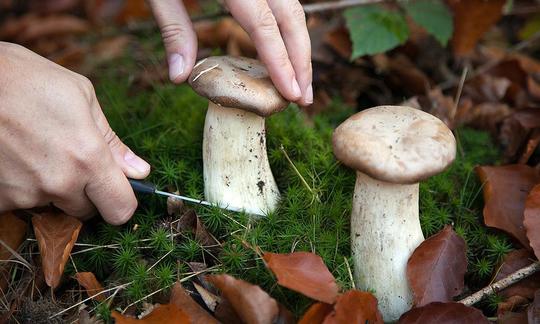

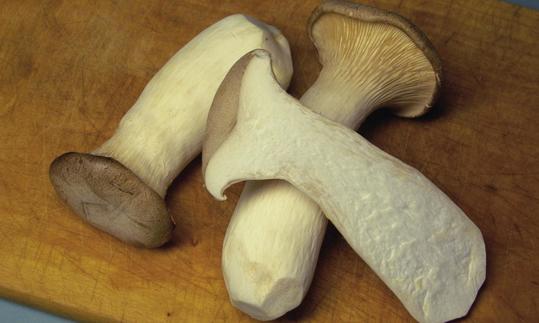

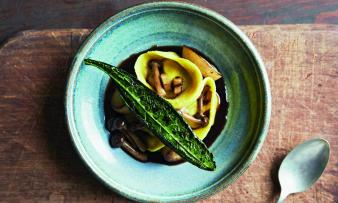
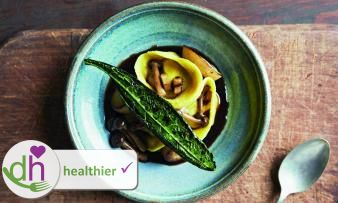
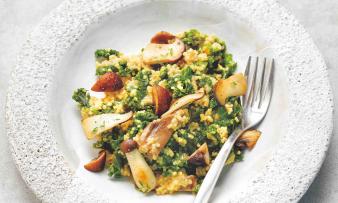
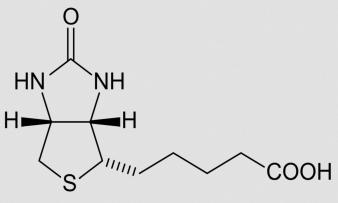
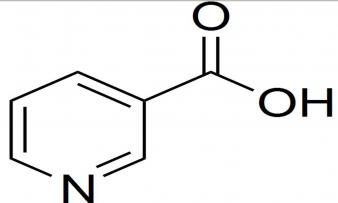
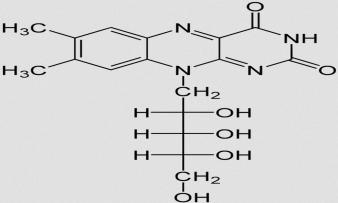


Comments